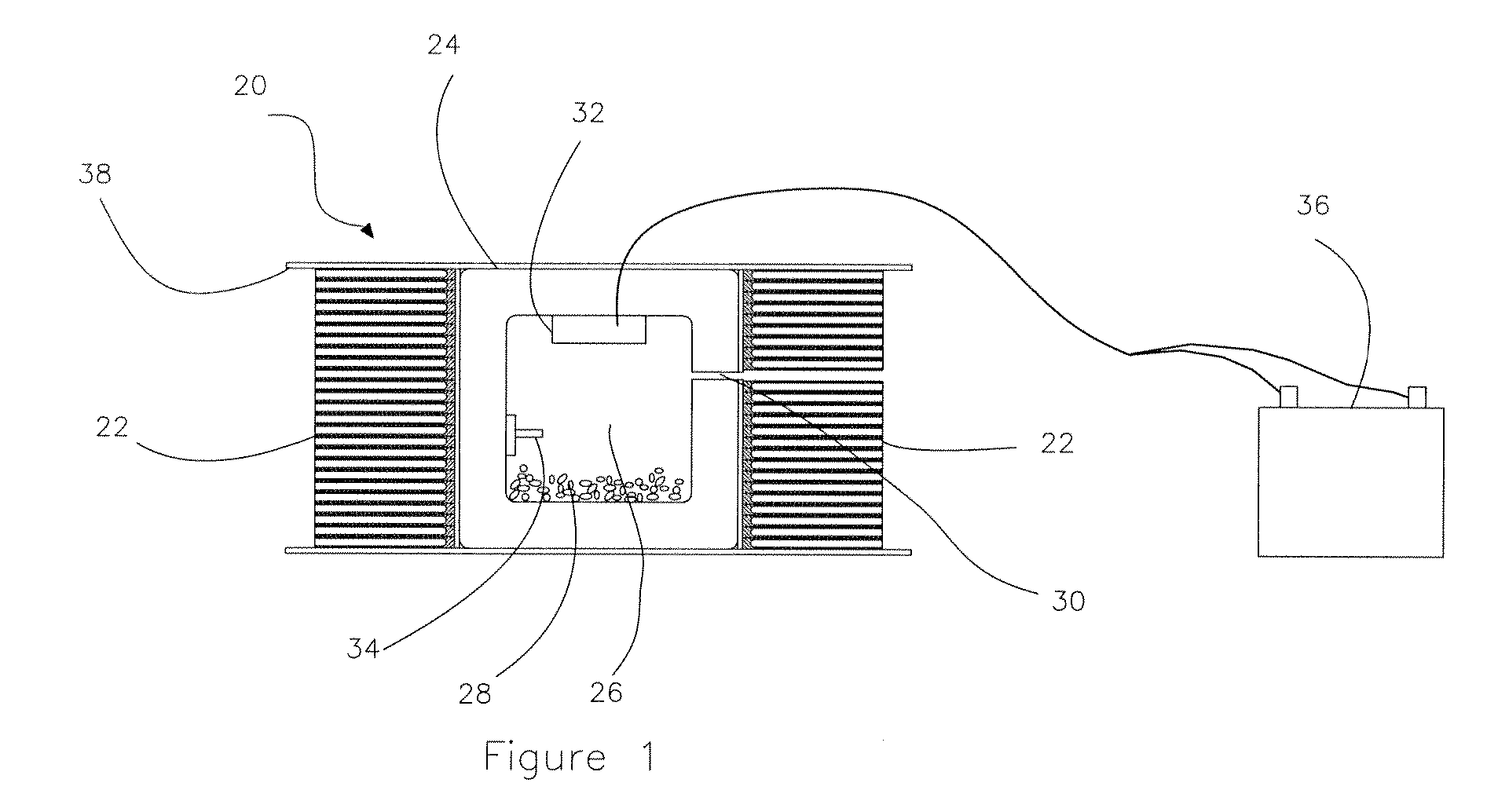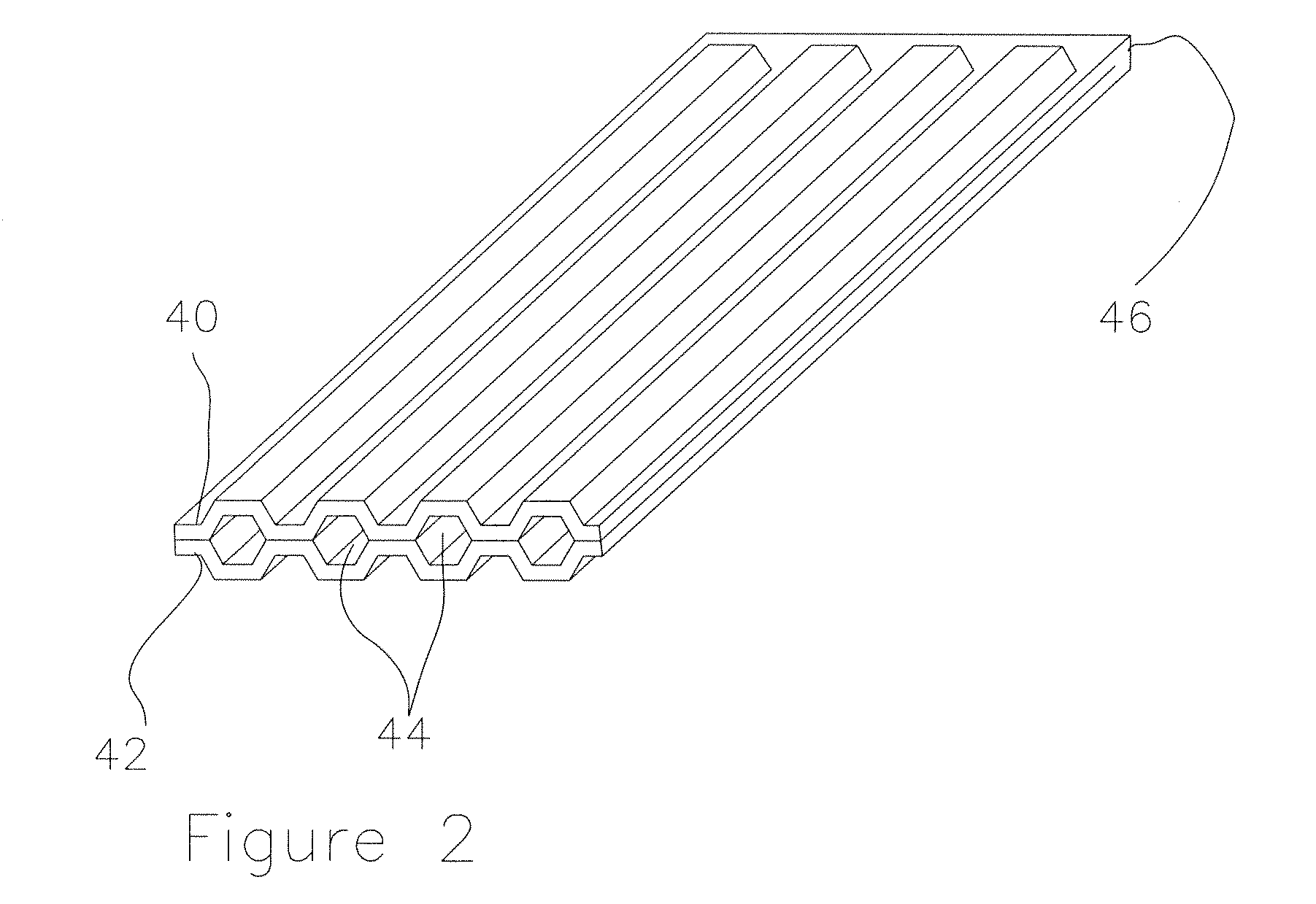Portable on-site incubator for bees and bee nest
a bee and nest technology, applied in the field of bee production, can solve the problems of low number of cavities per unit volume of board material, poor bee nest yield for the size of the nest, and large area of bees growing in very large areas, so as to reduce the dispersal of bees from the crop
- Summary
- Abstract
- Description
- Claims
- Application Information
AI Technical Summary
Benefits of technology
Problems solved by technology
Method used
Image
Examples
Embodiment Construction
[0045] Referring to FIG. 1, there is shown an embodiment of the present invention, comprising an apparatus 20 for providing solitary bees, preferably of the genus Osmia or the genus Megachile, for crop pollination, comprising a bee nest 22 and portable on-site incubator 24 which may be deployed in the field individually or in combination. The bees are placed in the apparatus in a thermally-insulated chamber 26 as dormant adults in cocoons 28 and stimulated to emerge at a selected time for crop pollination by the application of heat. The apparatus also includes means 32 for heating the chamber and means 34 for controlling chamber temperature. Emerged bees can exit the thermally-insulated chamber 26 by a bee exit means 30. The combined nest and portable on-site incubator are housed in a weatherproof housing 38. Female bees can lay their eggs in the apparatus in the bee nest 22 so that their offspring can be recovered and utilized for further pollination. In certain embodiments, more t...
PUM
 Login to View More
Login to View More Abstract
Description
Claims
Application Information
 Login to View More
Login to View More - R&D
- Intellectual Property
- Life Sciences
- Materials
- Tech Scout
- Unparalleled Data Quality
- Higher Quality Content
- 60% Fewer Hallucinations
Browse by: Latest US Patents, China's latest patents, Technical Efficacy Thesaurus, Application Domain, Technology Topic, Popular Technical Reports.
© 2025 PatSnap. All rights reserved.Legal|Privacy policy|Modern Slavery Act Transparency Statement|Sitemap|About US| Contact US: help@patsnap.com



